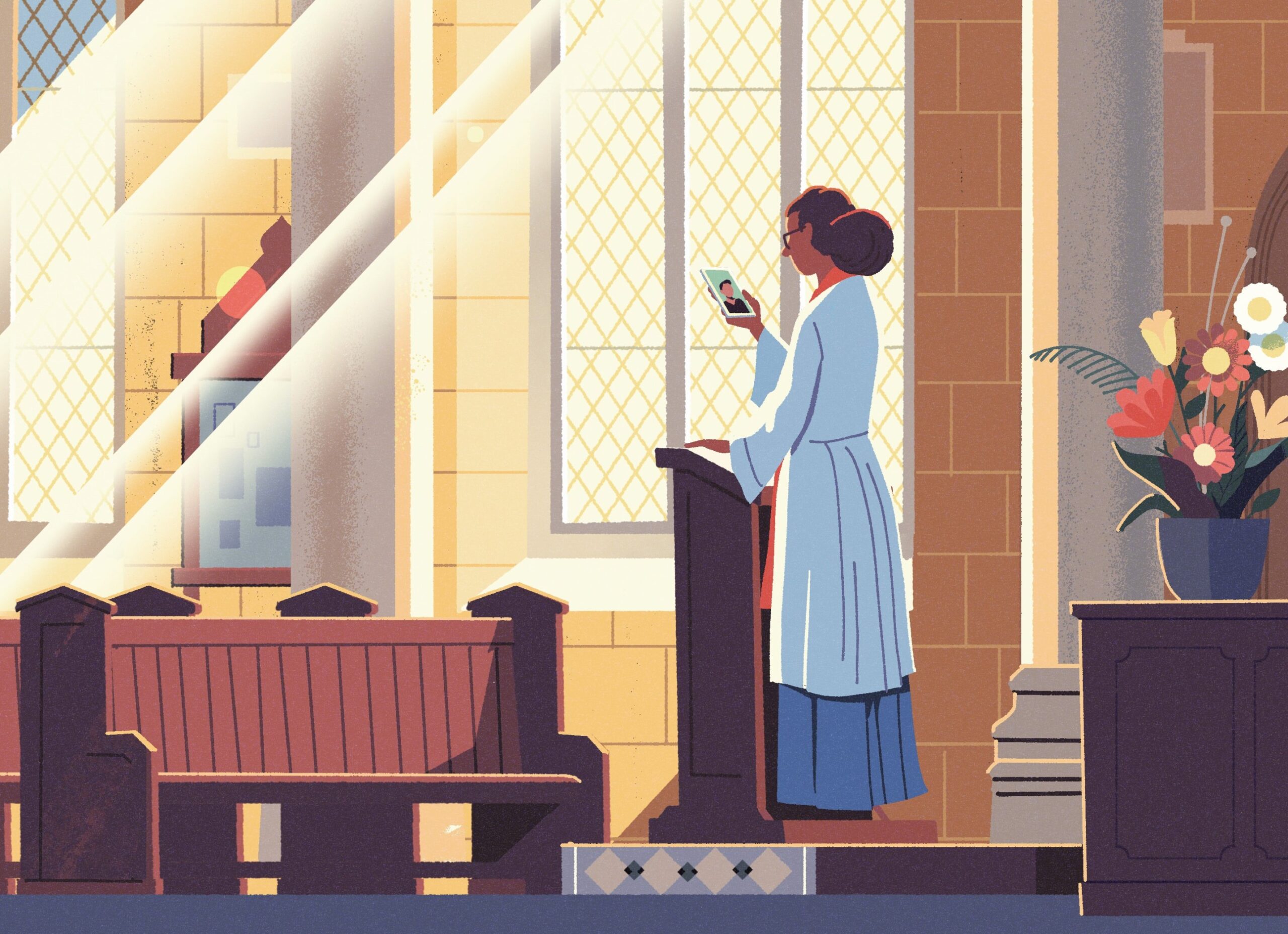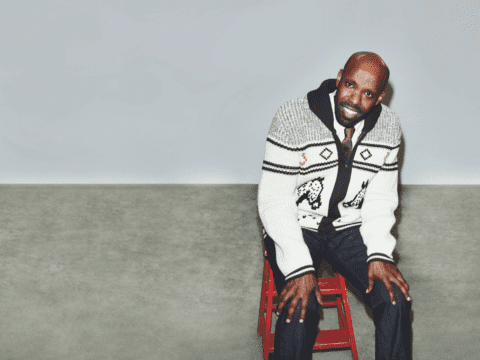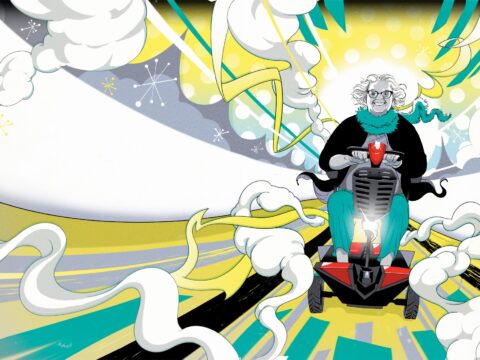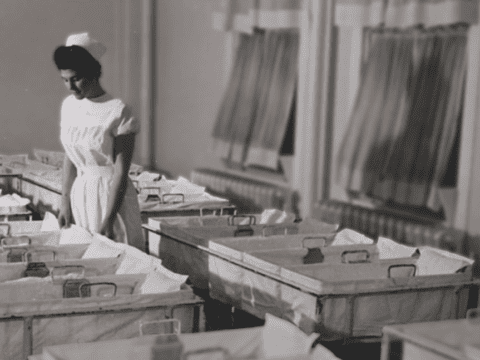We aren’t invincible. We never were. This is not the first pandemic. The 1918 flu claimed at least 50 million lives. Other pandemics since have claimed millions more.
But none of us have experienced anything as swift, merciless and all-encompassing as COVID-19. It’s as if the disease stretched its arms around the globe and in one fell swoop knocked life as we knew it off its moorings. Overnight, normal routines were short-circuited by lockdowns, travel bans, school closures and layoffs. We were told to stay home, to learn and apply the new language of physical distancing, self-isolation and personal protective equipment.
Nothing was immune, not even the places where people have historically sought solace in times of crisis. I am a church minister. In the same way that the virus derailed teachers’ ability to educate, or prevented shopkeepers from serving their customers, COVID-19 disrupted the familiar ways the church works. Services were banned, and my colleagues were kept from the bedsides of vulnerable or ailing parishioners. Church leaders could only provide comfort from a distance to people who lost loved ones. Sanctuaries that proclaim “All are welcome” sat shuttered and empty. In a cruel irony, the virus escalated near Easter, Christendom’s time of resurrection and rebirth, and one of the rare occasions when struggling churches can expect their pews to fill up. We people of faith groaned the ancient Psalm “How long, O Lord?” as we wondered when things would get back to normal.
The answer is never. Churches are no different from countless other institutions transformed by the pandemic. As much as we all might wish it to be so, there is no post-virus reset button. People of faith may one day gather again in sanctuaries to sing and pray, but the pandemic has irrevocably changed the way we think, feel, live, work and worship. It won’t be as it was because we aren’t who we were a few short months ago.
That’s not necessarily a bad thing. Communities of faith have been handed a golden opportunity to rethink their mission and retool for it. But it will require wrestling with some tough questions.
___________________________________________________________________________
In the days leading up to Easter, Rev. Will Ingram of St. Andrew’s Presbyterian Church in Toronto struggled with how and whether to celebrate communion online, given that members of the church community couldn’t physically gather together to share the bread and wine. Virtual communion “is allowed in our tradition,” he said, “but has rarely been utilized in anything but remote and extraordinary circumstances.” Ingram decided the circumstances were indeed extraordinary, and his church celebrated the sacrament as part of an Easter Sunday service streamed over the internet.
Afterwards, he received thankful messages from congregants. One wrote, “No excuses this year for not going to church. Wonderful online Easter service including communion, pandemic-style.”
More on Broadview: Why some United churches are in no rush to reopen
From the very outset, efforts to contain the virus meant making decisions on what is essential. While governments drew up lists of critical services, and individuals had to decide whether the cupboards were bare enough to warrant a trip to the grocery store, congregations exiled from their buildings had to figure out what they would continue to do, and how they would do it.
Predictably, the good word and the good deed topped the list. Like Ingram, countless housebound ministers turned to technology, scrambling to master the fine points of digital streaming and virtual conferencing so they could continue their ministries online. Pastoral care phone chains were set up to keep in touch with the most vulnerable members and the wider community. Healthy church volunteers started picking up prescriptions and groceries for those more fragile. Child and youth ministers delivered packages at doorsteps and led online craft sessions to give families quarantined together a break.
For some congregations, there’s no turning back. “In the space of three weeks, we went from having a simple website to one that is growing by the day,” says Rev. Anita Spiller, a minister at Jordan Station United Church near St. Catharines, Ont. “We have offered Facebook Live feeds. We just launched our own YouTube channel and started offering programming by Zoom. We have virtual storytime every day.” She adds, “We are building the framework to carry all of this forward even after the pandemic.”
Online worship has been a good temporary solution while there is no other way to gather. A number of churches have even reported higher “attendance” at these services. Perhaps this is because anxious people look to the church for comfort. Or perhaps it’s easier to drop into an online service than to darken a church door. Or both.

If online worship has worked well during the pandemic, will it work well afterwards? It’s one of those questions that begs more questions. Would offering worship exclusively online be the equivalent of leaving a group in the vestibule while inviting the technologically privileged to gather inside? Would rural parishioners without high-speed internet be bandwidth castaways? Does opting out of being seen lead parishioners to become more engaged — feeling freer, for example, to sing at the top of their lungs or close their eyes in meditation? Or will they become less invested, perhaps painting their toenails or preparing lunch while the service carries on in the background?
One thing is clear: the drift toward virtual worship, coupled with the financial meltdown the virus sparked, will intensify the bricks-and-mortar debate that has been consuming churches for years. On one side, the argument goes that old, leaky buildings are a colossal waste of money and effort; freed from the shackles of maintenance, churches could have more time and energy for doing good. On the other hand, it’s argued that buildings are a necessary source of stability and comfort when life is chaotic — crucial symbols of God’s presence and increasingly important as public meeting places are gobbled up by development. If there was ever a time for churches to resolve this debate or at least articulate a theology of place, it’s now.
Once the pandemic subsides, we will no doubt flood back to restaurants and parks as before. Maybe we’ll learn not to shudder when someone next to us coughs. But the upsurge in online shopping during COVID-19 may spell doom for storefronts we used to frequent, if they even survive the lockdown. Unless something that facilitates social connection replaces them, people might not mix like they once did.
Church buildings have long served as community hubs. In future, they might find that rather than relinquish the power of connectivity to hacker-prone conferencing software, there’s value in facilitating old-fashioned face-to-face meetings in buildings large enough to welcome neighbourhoods. Beyond simply offering cheap rental space, more churches could play a role in actively building up communities by connecting the groups and individuals who gather there. They might even emerge from this nightmare with the skills to invite the community to help pay for it.
___________________________________________________________________________
In late March, as the pandemic gathered momentum and much of the world retreated behind closed doors, The United Church of Canada kicked off a series of information-sharing webinars for congregational treasurers and ministers worried about empty offering plates and dwindling reserves. With the possibility of layoffs and closures looming ever larger, the webinar attracted record numbers of participants. (Full disclosure: I was a panellist on one of them.)
The United Church announced a loan program to help cash-starved local congregations. The Presbyterian Church in Canada also offered help to congregations, provided they apply for government assistance first. In the Anglican Church, regional bodies like the Diocese of Ottawa excused parishes from making their usual payments to the denomination for two months. “This is not a loan or incurred debt,” Rev. John Chapman, the Bishop of Ottawa, assured parish treasurers. “It is the forgiveness of your obligation to the Diocese for this period of time.”
For churches already struggling with declining membership and shrinking coffers, these and other initiatives may be too late. Lee-Ann Ahlstrom, the minister at Northlea United Church in Toronto, predicts that some churches won’t make it. “I think we’re facing survival of the fittest. And what I mean by that is, those communities who have the means to stay connected in alternative ways and who have the financial resources to keep up with expenses are more likely to endure the pandemic.”
The churches that survive may also be those that prove useful. Fifth Avenue Memorial United Church in Medicine Hat, Alta., played as active a role during the crisis as the lockdown would allow, offering not just virtual worship on Sundays but also online coffee klatches every weekday morning, weekly children’s time and Bible studies, links to trauma counselling, and prayers with minister Rev. David Pollard every evening. Two weeks into the pandemic, Pollard noticed a boost in givings, although he cautioned it was still early days. “The bookkeeper says the offering is the best we’ve had in months.”
___________________________________________________________________________
The church has always been on the front line of human suffering, with a skill set honed over 2,000 years to support families grappling with tragedy, to help ease the fallout of economic uncertainty, and to set up the infrastructure for community care. The church is also uniquely positioned to address the wider issues of inequality and skewed values the pandemic laid bare. COVID-19 has forced everyone to take stock of wants versus needs. With nowhere to go, we have had to slow down and consider things we take for granted. The promise of Jesus that “the last will be first, and the first will be last” (Matthew 20:16) played out before our eyes as garbage disposal workers and grocery store employees received standing ovations alongside doctors and nurses. Rabbi Reuven Bulka and Catholic Archbishop Terrence Prendergast of Ottawa spoke for many when they offered these words as part of a national day of prayer: “We gather together separated by life-saving physical distancing, but united more than ever in spirit; We know we are in a war against COVID-19 together, and the more together we are, the better and stronger we will emerge.”
While it was impossible not to be moved by ribbons tied to trees to honour medical workers, Christmas lights hung as a sign of hope, and apartment dwellers singing and making music from their balconies, we mustn’t forget that COVID-19 also spawned ugly supermarket frenzies and triggered squabbles between nations over borders and precious medical supplies. Especially in the early stages of the crisis, it sometimes seemed that generosity went out the door as swiftly as toilet paper and hand sanitizer. COVID-19 will continue to test the limits of generosity. As the pandemic dies down, waves of economic and emotional hardship are sure to follow. The fallout from the coronavirus will be felt most acutely by the people who were already suffering before the virus struck.
It won’t be as it was because we aren’t who we were a few short months ago.
A core belief of the church is that all God’s children are equally valuable, whether we are young or old, have pre-existing health conditions or not, or wave a maple leaf, a sun or a moon. In the months and years to come, will the church resist the pernicious view that human worth is measured by economic productivity? Will it continue to advocate, as we always have, for the most vulnerable people in God’s family, whoever and wherever they are? We need to respond to the suffering not just from wealthy countries like ours but also from countries that lack the resources we can marshal.
It’s a time for humility. It shouldn’t be hard to come by; COVID-19 has brought us to our knees. In grief and in prayer. Going forward, we will wrestle with large, pressing questions. That’s not new. The church has always been at its best when we have understood that we don’t know all the answers. What drives us isn’t knowing what’s next, anyway; it’s faithfully pursuing God’s call.
In some ways, we are as we always were: disciples of Jesus. The call to follow Jesus’ way of justice and love is eternal and unchanging; society hungers for those values now. The “what” hasn’t changed. The task before us is to figure out the “how.” Thankfully, we’ve been blessed with each other to work it out.
This feature first appeared in Broadview’s July/August 2020 issue with the title “Church in a pandemic.”
Rev. Trisha Elliott is a writer in Ottawa.
I hope you enjoyed reading this article from Broadview. The magazine and its forerunners have been publishing continuously since 1829. We face a crisis today like no other in our 191-year history and we need your help. Would you consider a one-time gift to see us through this emergency?
We’re working hard to keep producing the print and digital versions of Broadview. We’ve adjusted our editorial plans to focus on coverage of the social, ethical and spiritual elements of the pandemic. But we can only deliver Broadview’s award-winning journalism if we can pay our bills. A single tax-receiptable gift right now is literally a lifeline.
Things will get better — we’ve overcome adversity before. But until then, we really need your help. No matter how large or small, I’m extremely grateful for your support.
Jocelyn Bell
Editor/Publisher
















Great article.
But we may add…
OR, will we carry on in a few years forgetting what was behind us?
OR, will we do what we did in the 1920’s, after the Spanish Flu pandemic? Everyone satisfying their wants and desires with consumerism, changing technology, society, culture and religion (not always for the better). Political divisions rose, definitely not for the better. The economy boomed until it burst in the 30’s.
Crime rose, as did racism, but the way of life improved.
I’ll stick with the positive in the article, but we also need to be realistic in our approach towards the next day.